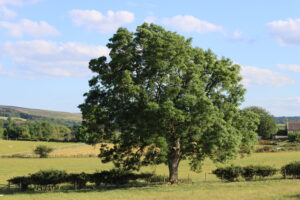Protecting peatlands could save half a billion tonnes of CO2
Restoring peatlands could save half a billion tonnes of carbon dioxide (CO2) emissions, according to a new study led by the UK Centre for Ecology and Hydrology.
Peatlands cover just 3% of the global land surface, but they store around 650 billion tonnes of CO2, around 100 billion tonnes more than all the world’s vegetation combined.
In their natural state, peatlands can mitigate climate change by continuously removing CO2 from the atmosphere and storing it securely under waterlogged conditions.
However, many peatlands have been substantially modified by humans with things such as drainage and forest plantations harming the ecosystems.
This results in the release of around 1.5 billion tonnes of CO2 into the atmosphere each year – this equates to 3% of all global greenhouse gas emissions caused by human activities.
The research team, therefore, analysed the impact of halving current drainage depths in croplands and grasslands on peat – which cover over 250,000 km2 globally.
They found that this could bring significant and realistic benefits for climate change mitigation.
The study estimates that achieving this could cut emissions by around 500 million tonnes of CO2 a year, this equates to one per cent of all global GHG emissions caused by human activities.
Professor Sue Page, co-author of the study from the University of Leicester’s said: ‘Our results present a challenge but also a great opportunity. Better water management in peatlands offers a potential ‘win-win’ – lower greenhouse gas emissions, improved soil health, extended agricultural lifetimes and reduced flood risk.
‘For agricultural peatlands, the balance is between climate security, and livelihood and food security. Our study indicates that raising peatland water levels could allow peatland farmers to both reduce the climate impact of their activities and extend the usage of these very fertile organic soils through modified land management.
‘However, this will not be possible in all locations, and will need to be considered alongside other options, including complete rewetting and ecosystem restoration.’











